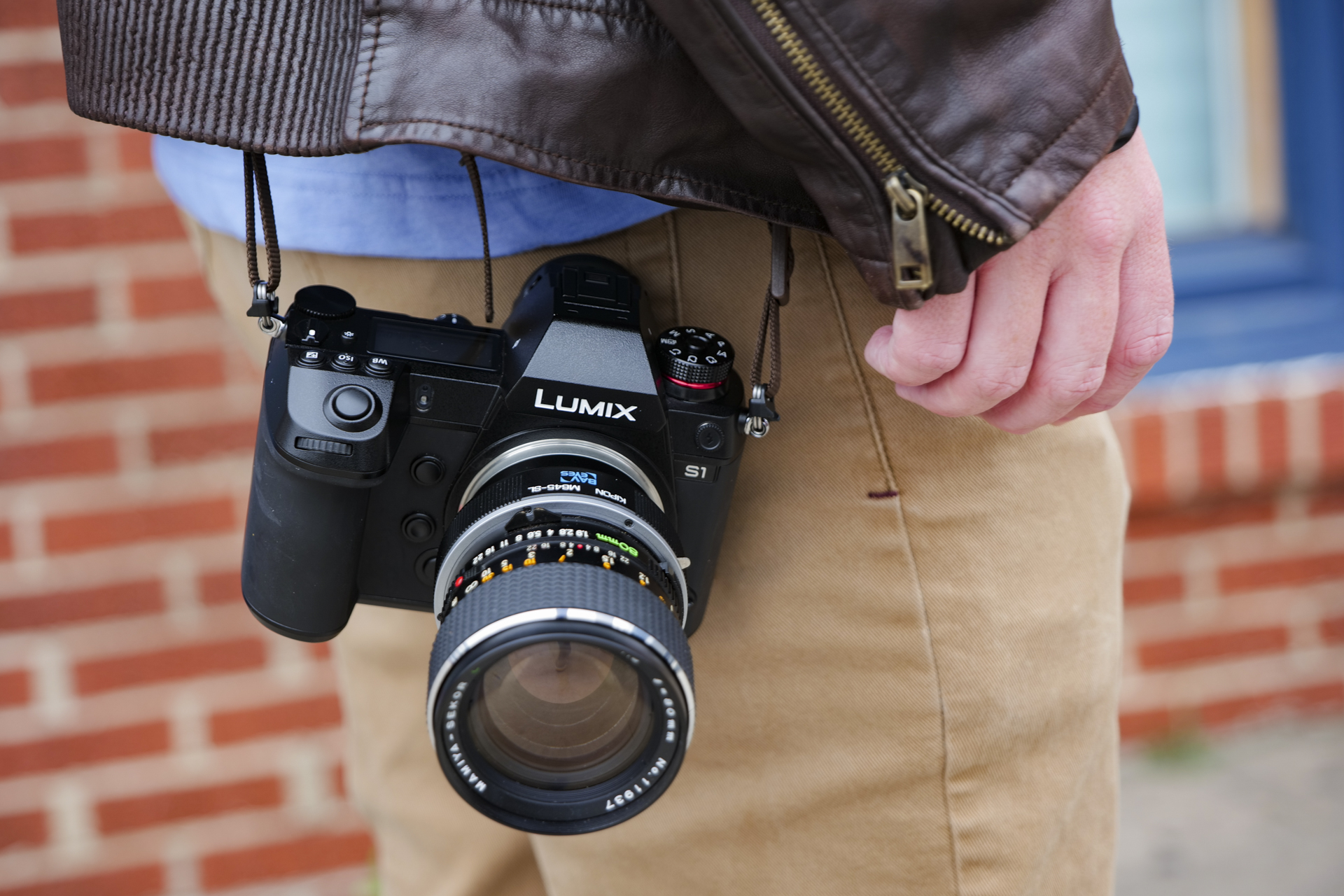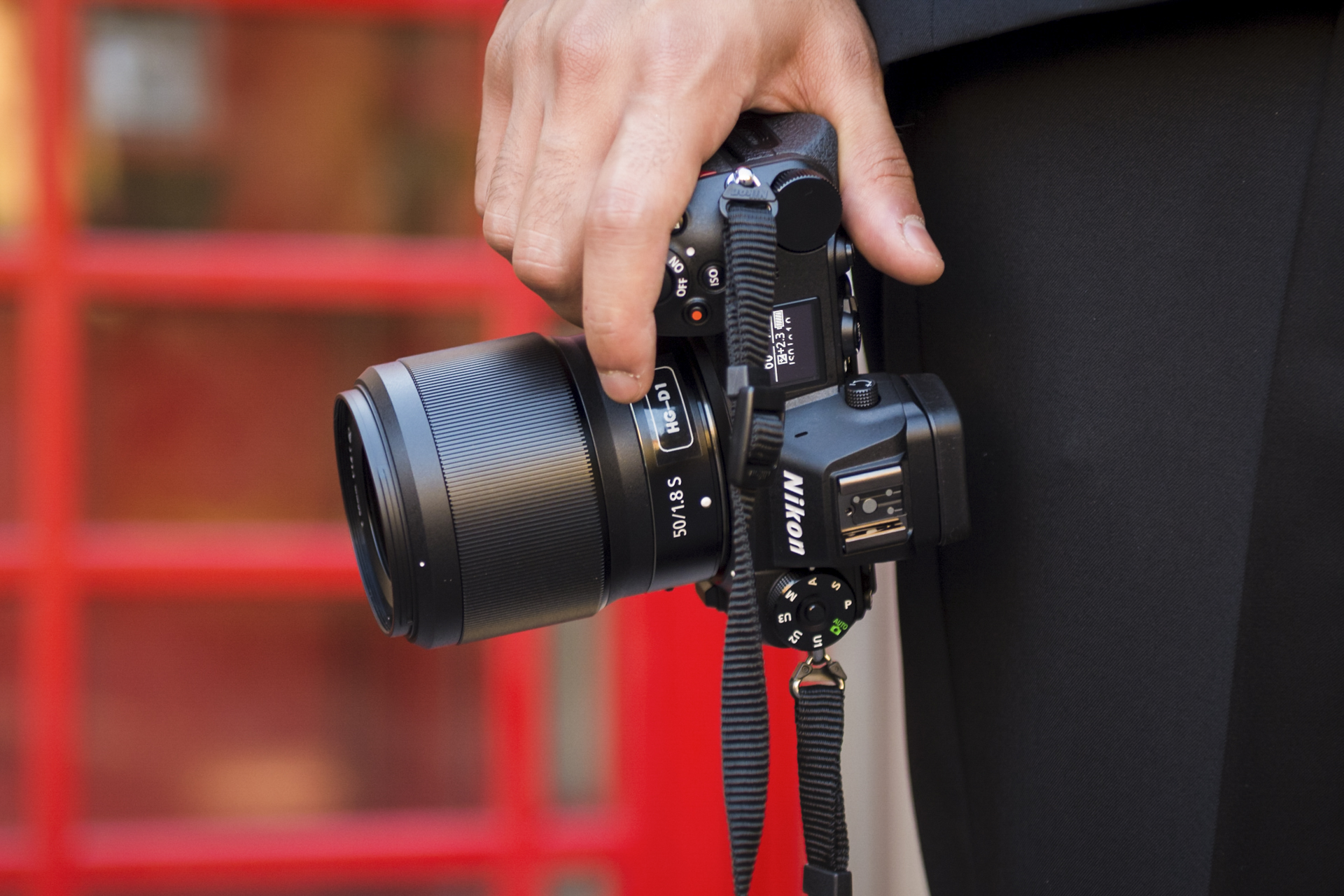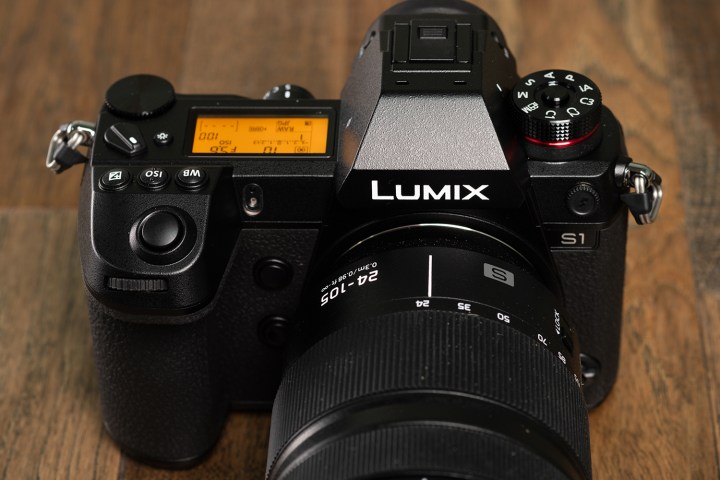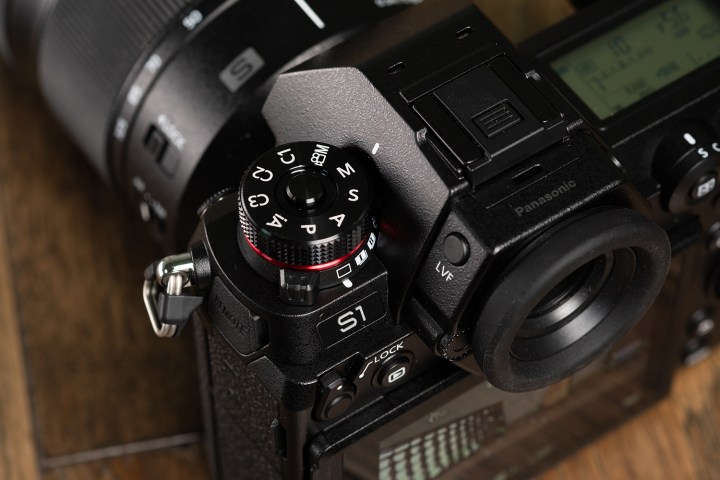The Panasonic Lumix S1 and Nikon Z 6 are both 24-megapixel, full-frame mirrorless cameras that lie at the low end of their respective systems. But to call either of these cameras “entry-level” is a bit misleading. Both feature the same build quality and control layouts of their more expensive sibling cameras, just with less resolution. They are built for professional use.
A similar as they are, each takes a different approach to design and targets a slightly different customer. The Nikon is the slimmer and lighter of the two, while the Lumix looks and feels like a professional DSLR — bulky, but with much more direct access control. The S1 also features a high-resolution mode that produces 96MP images, a significantly sharper electronic viewfinder (EVF), and two memory card slots.
The Lumix S1 is the more expensive of the two at $2,500 compared to just $2,000 for the Z 6, but that doesn’t automatically make it the better camera. The Nikon has some advantages when it comes to autofocus, and may even be the better choice for video, depending on your specific needs.
| Panasonic Lumix S1
|
Nikon Z 6 
|
|
| Sensor | 24-megapixel, full-frame sensor | 24-megapixel, full-frame sensor |
| Burst speed | 9 fps (6 with AF-C) | up to 12 fps (5.5 fps with live view) |
| Shutter speed | 1/8,000 to 60 sec. | 1/8000 to 30 sec. |
| ISO | 100-51,200 (50-204,800 expanded) | 100 – 51,200 (50-204,800 expanded) |
| Autofocus | 225-point contrast-detection DFD AF | 273-point hybrid phase-detection contrast AF with AF assist beam; detection range -2 to +19 EV |
| Image stabilization | 5-axis sensor-shift stabilization | 5-axis sensor-shift stabilization |
| Video | 4K/30p, 4K/60p with 1.5x crop, HLG (V-Log via firmware update) | 4K/30p 8-bit (10-bit N-Log over HDMI) |
| Viewfinder | 5.7m-dot OLED EVF | 3.7m-dot OLED EVF |
| LCD | 3.2-inch, 2.1m-dot tilting touchscreen | 3.2-inch, 2.1m-dot tilting touchscreen |
| Connectivity | Wi-Fi, Bluetooth | Wi-Fi and Bluetooth |
| Media slots | 1 SD, 1 XQD (CFexpress support coming) | 1 XQD (CFexpress support coming) |
| Battery | Li-ion rated for 380 shots | Li-ion rated at 310 shots |
| Dimensions (WxHxD) | 5.87 x 4.33 x 3.82 inches | 5.3 x 4 x 2.7 inch |
| Weight | 35.8 ounces | 20.7 oz. |
| Kit lens | Available body only or with 24-105mm f/4 | Available body only, with a 24-70mm f/4 or as part of the filmmaker’s kit |
| Price | $2,500 body-only | $2,000 body-only |
| Read more | Panasonic Lumix S1 Review | Nikon Z 6 Review |
| Buy now | Amazon | Amazon |
Sensor
While both the Nikon Z 6 and Panasonic Lumix S1 feature 24MP full-frame sensors, only the S1 has a multi-shot high-resolution mode. This uses the stabilization gimbal to shift the sensor slightly between images, taking eight exposures in total and combining them into a single photo with a resolution of 96MP. This mode requires a tripod and a perfectly still subject, so it’s best used for landscapes and still-life scenes.
Other than that, both sensors produce remarkable image quality, with equal ISO ratings and excellent noise performance. If you don’t need — or simply can’t use — the high-resolution mode on the S1, then there’s nothing you’ll give up, image quality wise, by going with the Z 6.
- 1. Shot on Lumix S1
- 2. Shot on the Z 6
Winner: Lumix S1
Speed
This is where the Nikon comes out ahead with a maximum continuous shooting speed of 12 frames per second with continuous autofocus. It’s not perfect, however, as the Z 6 can’t display a live view image at that speed. If you want live view, you’ll have to drop down to just 5.5 frames per second.
The S1 has the opposite limitation. It manages a respectable 9 fps with live view, but drops down to 6 fps if you also need continuous autofocus. We’re giving the Nikon the win here, but how you shoot will determine whether live view or continuous autofocus is the more important feature to have.
Winner: Nikon Z 6
Autofocus
This is one area where the companies take a very different approach. Nikon has followed the likes of Sony by using on-chip phase-detection autofocus, layering 273 focus points over the sensor. Panasonic instead uses its proprietary Depth from Defocus (DFD) technology, which is based on contrast-detection autofocus and split into 225 zones. While contrast detection is normally slower than phase detection, DFD speeds it up considerably. In our testing, it performed nearly equally to phase-detect systems most, but not all, of the time. We found Nikon’s autofocus to be more reliable, especially when it comes to tracking moving subjects, although it’s not perfect.
The S1 does incorporate advanced subject recognition, which can track faces, eyes, and some animals. In practice, it worked well in our testing, although occasionally would lose track of the subject. Nikon plans to bring eye-detection autofocus to the Z 6 via firmware update, but we will have to wait to test this feature.
One potential benefit of the S1’s contrast-detect autofocus, however, is that it doesn’t require special phase-detect pixels on the sensor, which, in theory, can allow for more extreme exposure pushes in post without running into “banding” problems. We found that images did indeed have ample detail in the shadows, while other reviewers have pointed to the Z 6’s tendency to reveal a banding pattern after heavy brightening — but in real-world situations, you may never notice a difference.
Winner: Tie
Design
Whether you prefer the design and handling of the Z 6 or S1 largely comes down to personal preference. The S1 is by far the heavier and larger of the two, weighing in at over 2 pounds with the battery loaded. But if you can get over the weight, it offers the most functional and complete control layout of any mirrorless camera we’ve ever tested. Some of the S1’s buttons even light up, making them easier to see when shooting in low-light scenes.
Both cameras are built very well and are professionally sealed against the elements. Both also have very good electronic viewfinders (EVFs), but the S1’s boasts higher resolution, with 5.7 million pixels — 2 million more than the Z 6. Both cameras have 3.2-inch, 2.1 million-dot tilting LCD touchscreens as well as secondary LCDs on the top plate for displaying exposure settings and other information.
The Lumix takes advantage of its larger body to give you two memory card slots, one SD and one XQD, while the Z 6 has a single, XQD slot. Both manufacturers have promised support for higher-speed CFexpress cards in the future, which have the same physical form factor as current XQD cards.
We’ll give the S1 the win here for its higher-resolution viewfinder, increased direct access control, and dual card slots — but if you want a lighter weight camera, those might be things worth giving up by going with the Z 6.
Winner: Lumix S1
Stabilization
Both cameras use 5-axis sensor-shift stabilization to counter camera motion when shooting handheld, and both do a very good job in still and video modes. The Lumix has the advantage, however, as its system is good for 6 stops of shake reduction — 6.5 when paired with an optically stabilized lens — while the Nikon’s is only good for 5. It’s not a huge difference, but Panasonic’s experience designing sensor-shift stabilization systems for its Micro Four Thirds cameras has obviously paid off here. The Z 6 and the higher-end Z 7 represent Nikon’s first attempt at in-body image stabilization.
Winner: Lumix S1
Video
Panasonic is well known as a video company, and the Lumix GH series (built on the smaller Micro Four Thirds format) continues to present us with some of the best video cameras you can buy. The Lumix S1 isn’t really targeting that same audience, but it still packs a punch when it comes to video features. Even compared to the more expensive Lumix S1R, it has some pretty big advantages. It can shoot oversampled 4K/30 from the full width of the sensor with no time limit, or 4K/60 from an APS-C crop with a 30-minute time limit.
Nikon doesn’t have the same video pedigree, but the company has scrambled to bring its latest cameras up to speed — and in some ways, it has even surpassed what Panasonic is doing. The Z 6 tops out at 4K/30, but it can output 10-bit 4:2:2 footage over HDMI in the new N-Log color profile, promising greater dynamic range and flexibility in post. What’s more, it will become the first hybrid camera to offer RAW video output, a feature coming via new firmware. For serious video shooters, that’s quite a perk. Internally, however, the Z 6 remains limited to 8-bit recording and can’t go beyond 30-minutes in a single take.
The S1 has a video-focused firmware update of its own in the works, which will bring Panasonic’s V-Log profile and 10-bit recording to the camera. However, this will be a paid update and the camera will still lack RAW output, but it will allow for internal log and 10-bit recording, something the Z 6 lacks. Panasonic plans to release the update in July 2019, but has not yet detailed the price. For now, the S1 can achieve 10-bit video using the Hybrid Log Gamma (HLG) profile.
This one is too close to call. If you’re in a position to use an external recorder, the Z 6 will have one powerful advantage if you’re not afraid of working with RAW video. If you’d rather stick with internal recording, however, the S1 is probably where you’ll find the better results — especially if you shell out the cash for the V-Log update when it becomes available.
Winner: Tie
Battery life
Neither of these cameras advertise strong battery life, but the S1’s massive 3,050mAh battery helps it eke out a few additional photos over the Z 6, with a rating of 380 shots compared to 330. That big battery, of course, is one reason why the S1 weighs so much.
Perhaps because its engineers realized how much power the S1’s 5.7-million-dot EVF was going to consume, Panasonic also built in a special Power Save Live View Finder (LVF) Shooting mode, which somewhat mimics how a DSLR manages power. In this mode, the camera will go to sleep after a short time, but will leave some functions active, like the EVF eye sensor and shutter button. Battery life is stated as over 1,000 exposures in this mode.
Winner: Lumix S1
Lenses
You could call this in either camera’s favor, depending on your point of view. The Lumix S1 is built around the Leica L mount, which already has a collection of lenses that are fully compatible — but they may be prohibitively expensive (they’re made by Leica, after all). Additionally, Sigma has signed on to develop L-mount lenses, with 11 of their acclaimed Art-series lenses currently on the way. Of the three Lumix S lenses currently available from Panasonic, the S Pro 50mm f/1.4 is also one of the best 50mm lenses we’ve ever seen — of course, at $2,300, it should be.
Nikon is in a different boat, being the sole brand behind its new Z mount. Undoubtedly, third-party manufacturers will step up with lenses for the system, but for now, you’re left with a fairly limited collection — unless you’re willing to use the F-mount to Z-mount adapter. With the adapter, you can mount any modern Nikon F-mount lens (and most third-party F-mount lenses) onto the Z 6 — without a loss in performance or image quality in our tests. Yes, this somewhat negates the smaller form factor of the mirrorless body, but it does mean there is a plethora of lenses available at a wide variety of price points.
So, the S1 currently has more lenses available that don’t require an adapter, but may be above your budget, while Nikon has fewer native lenses, but more total lenses if you count those that can be easily adapted to it. We’ll give this one to Nikon, because the lack of affordable lenses is a current sore point in the Lumix S series, but if you’ve got the budget for it, you can find some excellent glass for the S1.
Winner: Nikon Z 6
Picking an overall winner
- 2. The Nikon Z 6
The Lumix S1 is almost two cameras in one. It’s a hybrid still/video machine with excellent low-light performance from its 24MP sensor, and an ultra-high-resolution camera capable of shooting 96MP images when you need detail over speed. It also has an absolutely gorgeous EVF, dual memory cards, and expertly designed control layout.
But the Nikon Z 6 is no slouch, and even comes out ahead in some areas despite costing $500 less. It is lighter and smaller, has the more reliable autofocus, and will even be able to output RAW video.
Really, there’s no clear winner here — it depends entirely on what and how you shoot.












